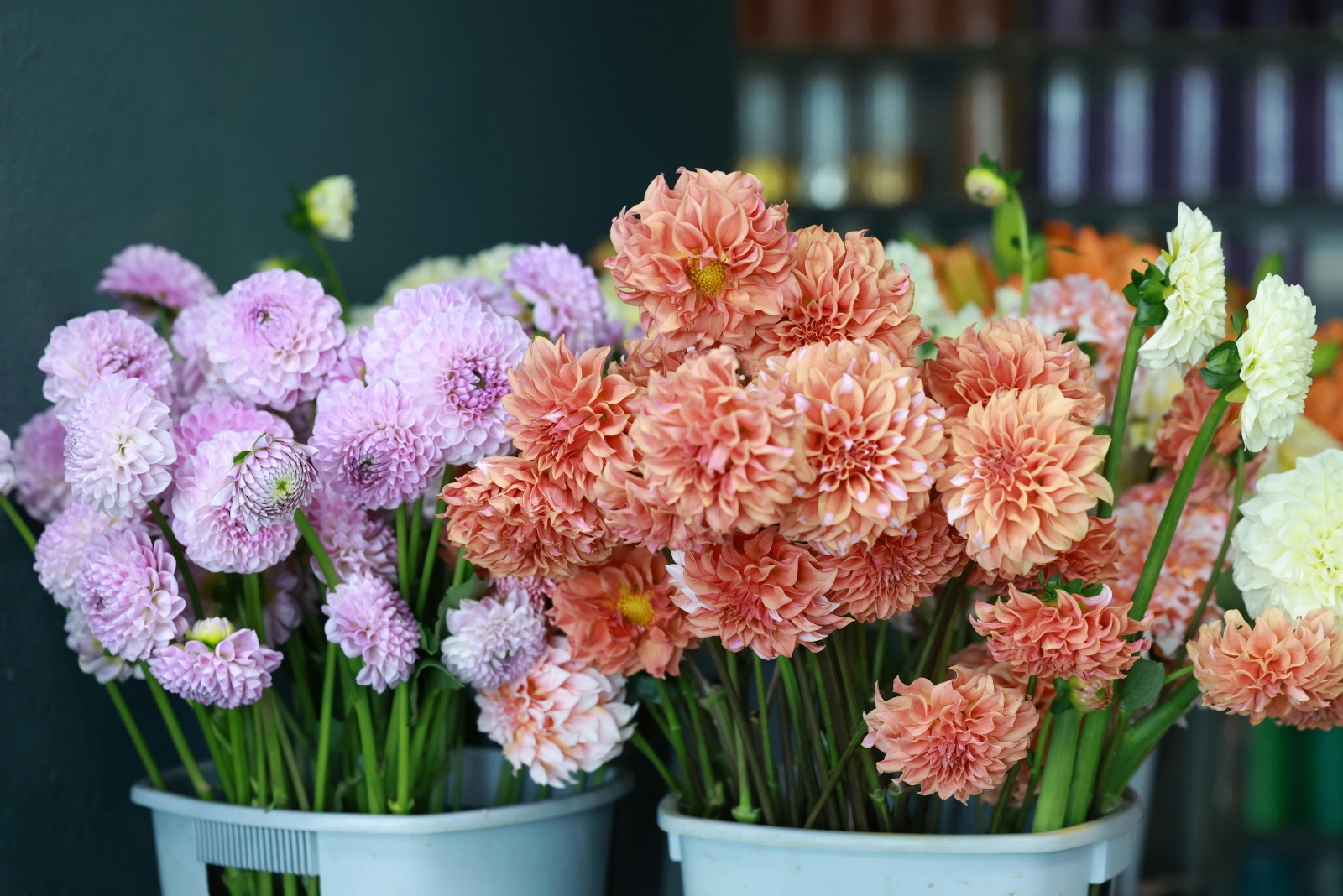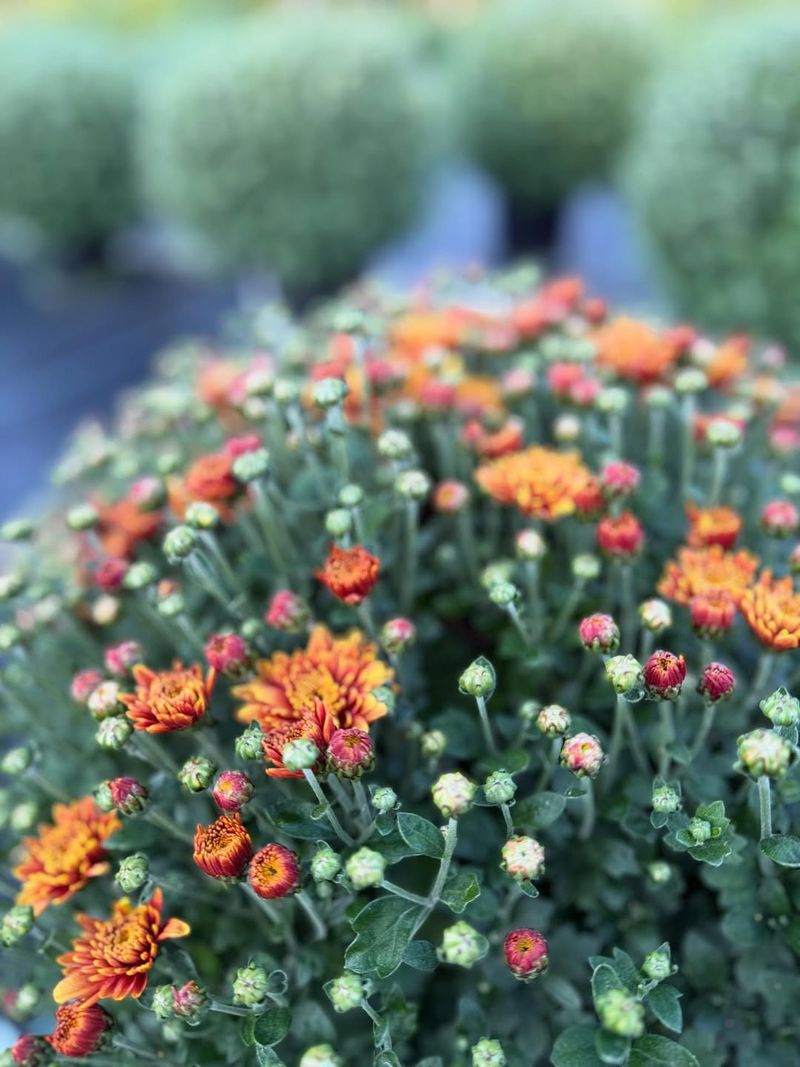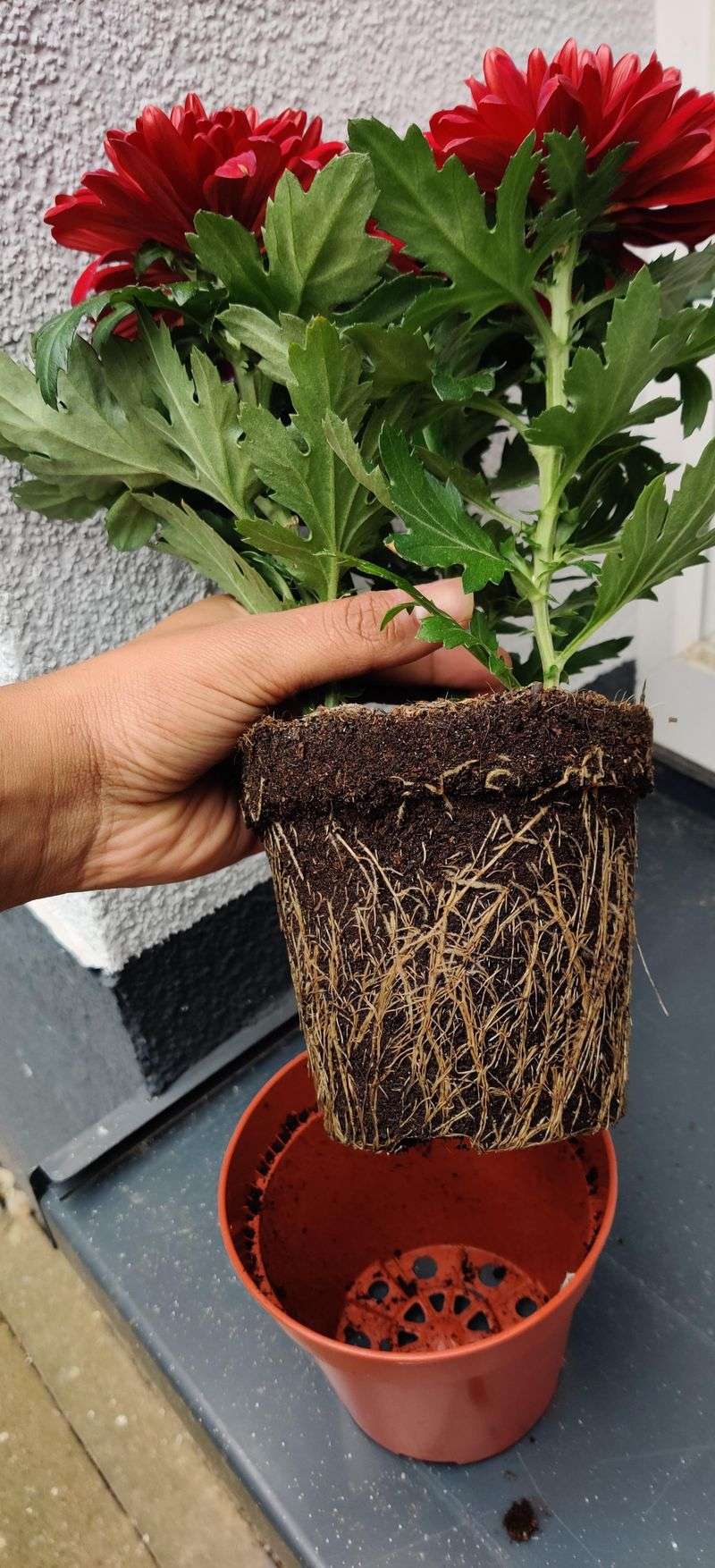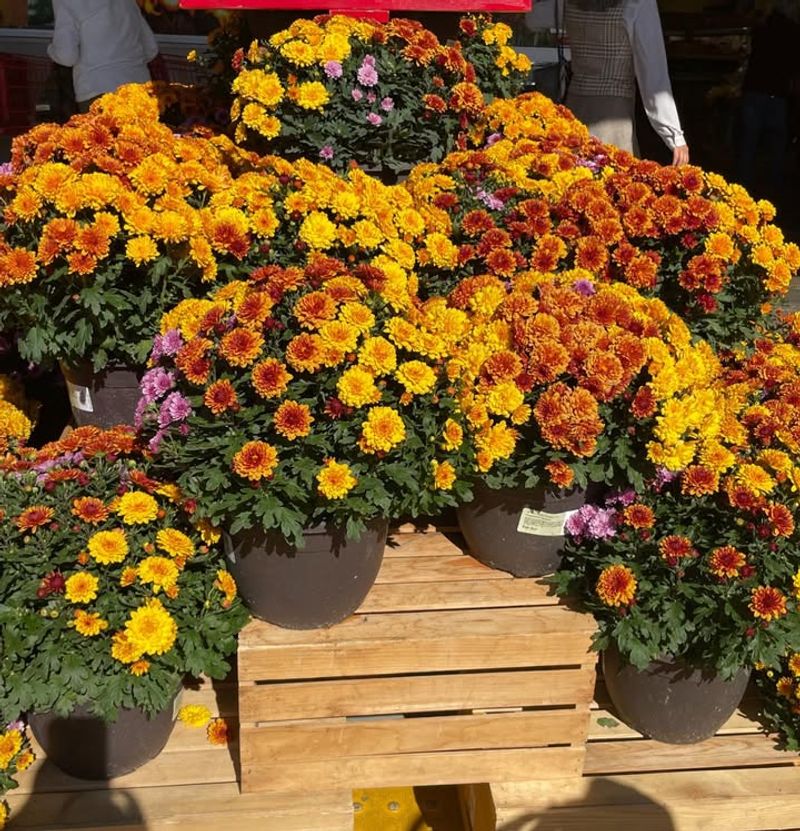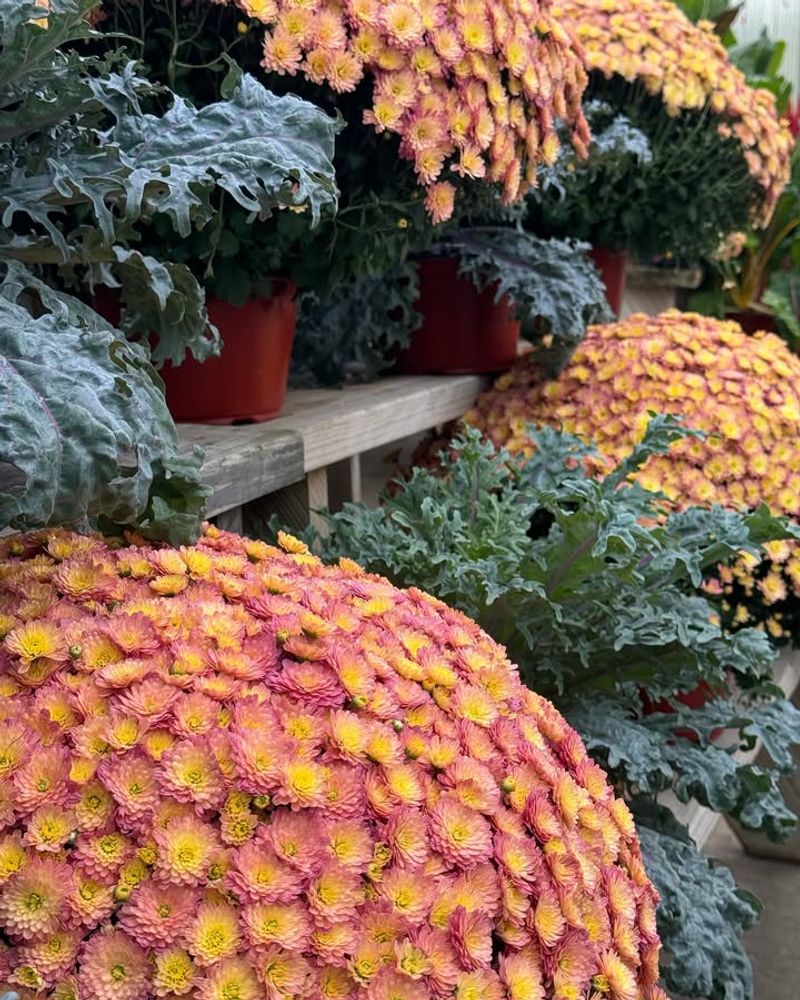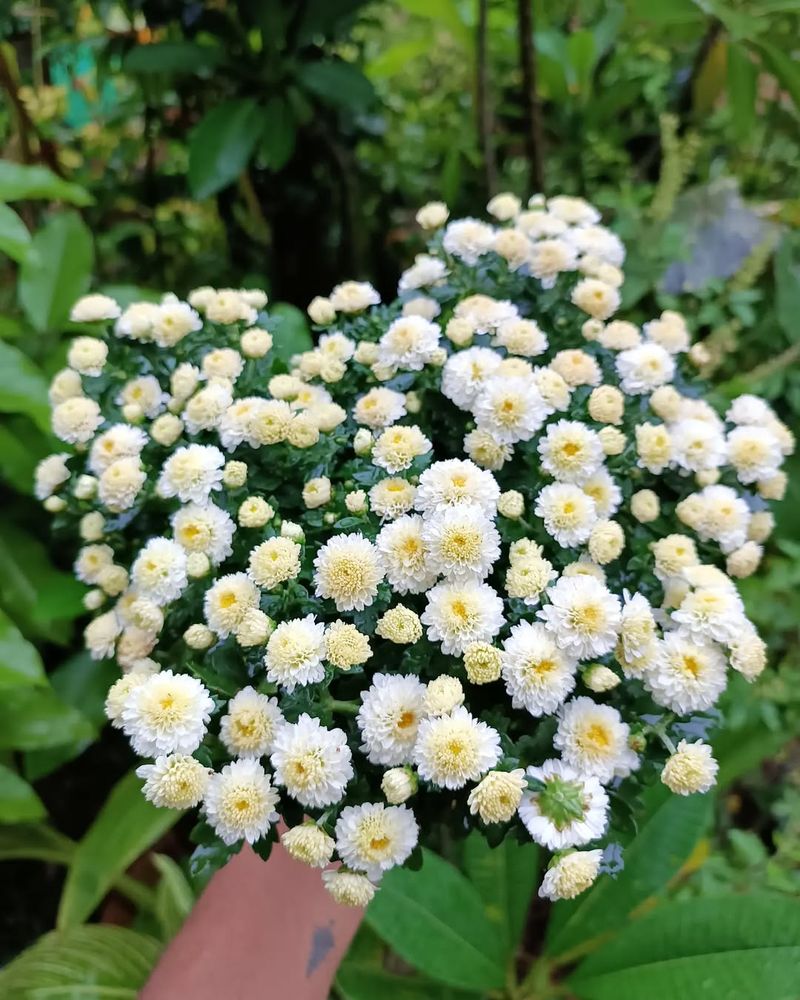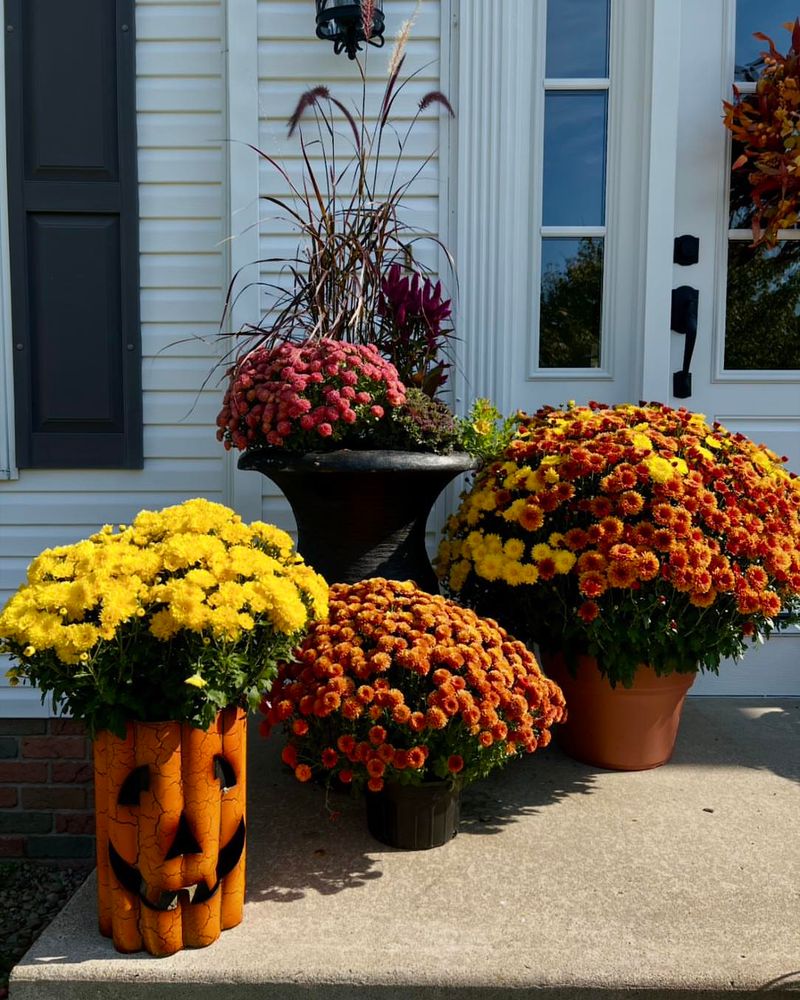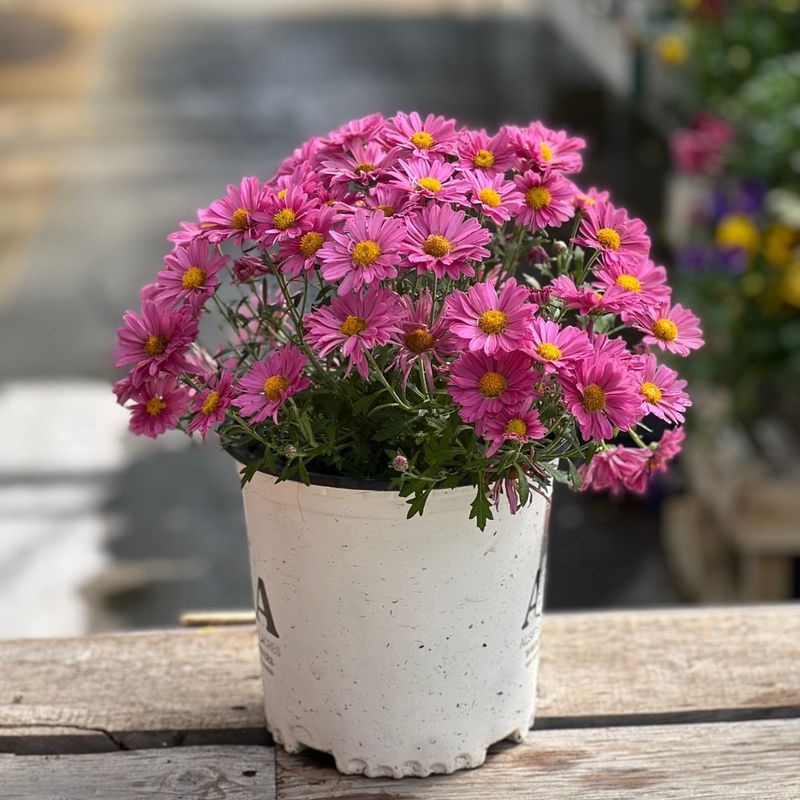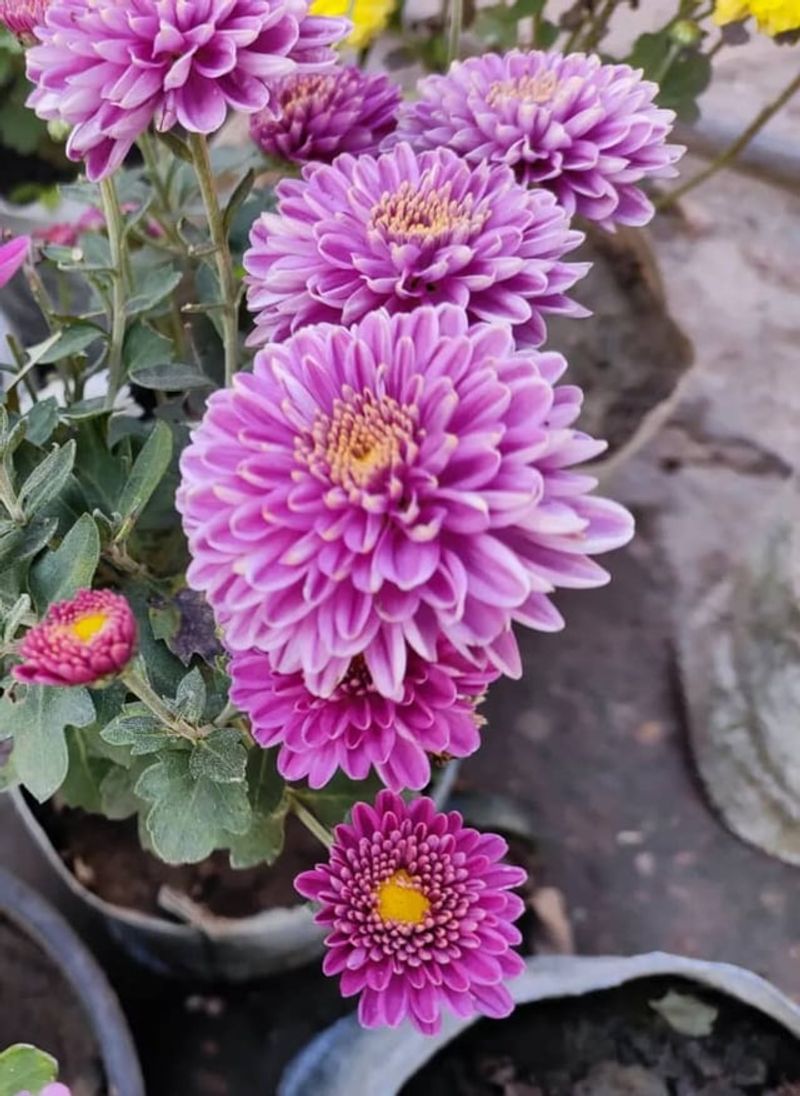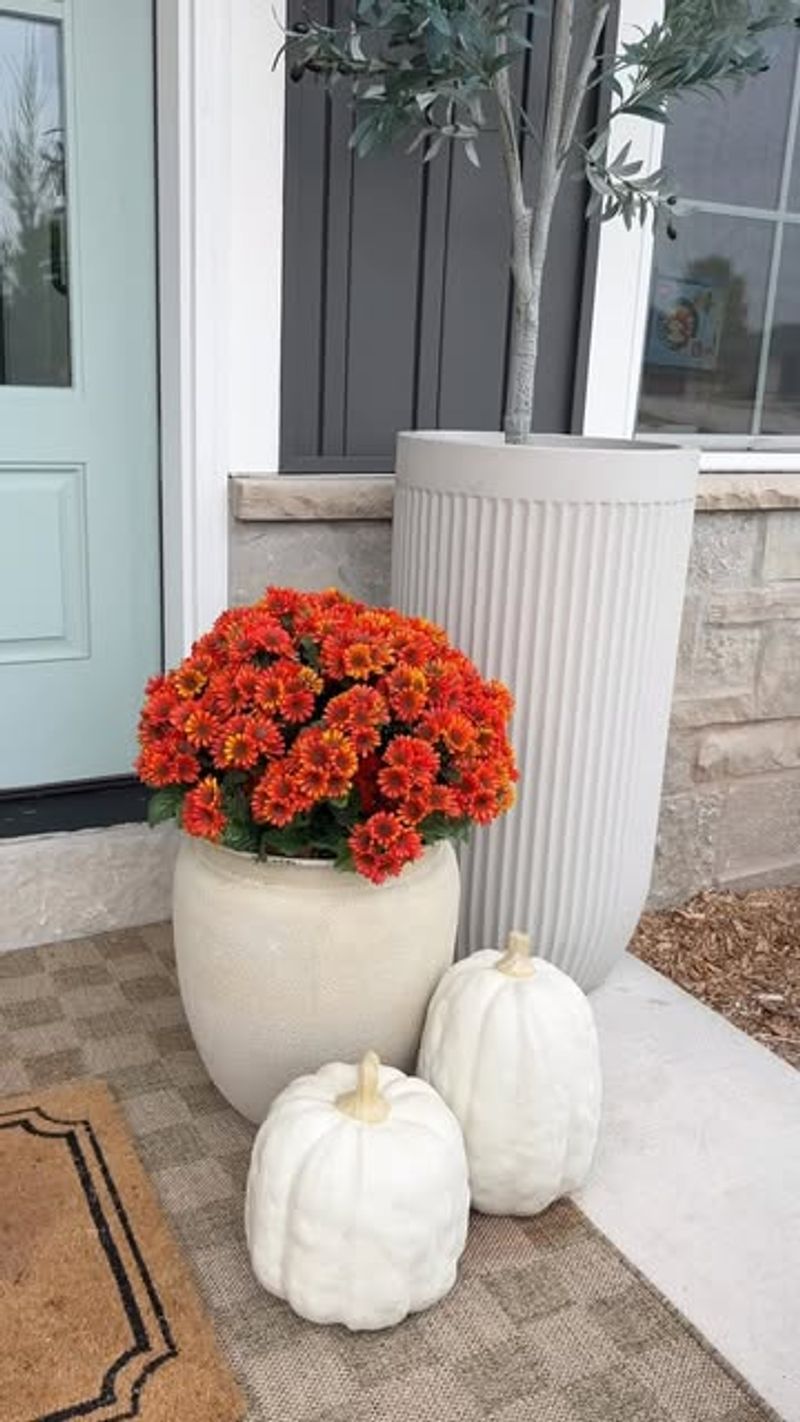Fall in Tennessee means cooler weather, colorful leaves, and beautiful mums decorating porches across the state. Picking the perfect mums might seem easy, but many shoppers make simple mistakes that lead to wilted flowers or wasted money.
Knowing what to avoid can help you choose healthy plants that will brighten your home all season long.
1. Picking Mums That Are Already Fully Bloomed
Grabbing the prettiest, most colorful mum on the shelf feels right, but plants covered in open flowers won’t last as long. Mums with mostly buds and just a few open blooms will give you weeks more color.
Look for plants where about half the buds are still closed. Those tight buds mean fresh flowers are waiting to open, extending your display time significantly.
Fully bloomed mums might look gorgeous today but could fade within a week or two of bringing them home.
2. Ignoring The Root System Before Purchase
Most people never peek beneath the surface, but healthy roots determine whether your mum will thrive or struggle. Gently tip the pot and check if roots are visible through drainage holes.
White or light-colored roots indicate a healthy plant, while dark, mushy, or circling roots signal problems. Root-bound mums with roots wrapped tightly around themselves often fail to establish properly in Tennessee gardens.
A quick root check takes seconds but saves you from buying a plant that’s already stressed and unlikely to recover well.
3. Buying Too Early In the Season
Spotting mums in stores during late summer is tempting, but Tennessee’s heat can be brutal on these cool-weather lovers. Mums prefer temperatures below 70 degrees to look their best.
Purchasing in early August means struggling to keep plants alive through weeks of scorching weather. Wait until mid-September when temperatures drop and mums naturally thrive.
Early buyers often watch their plants wilt despite constant watering, wasting money on replacements when cooler weather finally arrives in October.
4. Choosing Mums Based Only On Color
Color catches your eye first, but focusing only on flower shade means missing important plant health signs. A gorgeous burgundy mum with yellow leaves or weak stems won’t perform well.
Check foliage color, stem strength, and overall plant shape before committing to a purchase. Dark green leaves without brown spots indicate proper care and nutrition.
Balance your color preferences with plant health assessment to ensure your mums actually survive long enough to enjoy their beautiful blooms.
5. Skipping The Foliage Inspection
Flowers grab attention, but leaves tell the real story about plant health and care history. Yellow, brown, or spotted leaves suggest disease, pest problems, or improper watering.
Healthy mums display vibrant green foliage all the way down to the soil line. Leaves should feel firm, not crispy or wilted, and show no signs of insect damage.
Poor foliage often means the plant is already stressed, making it harder to keep alive once you get it home to your porch.
6. Forgetting To Consider Tennessee’s Weather Patterns
Tennessee’s fall weather swings wildly between warm days and chilly nights, which affects mum survival differently than in other states. Understanding these patterns helps you time your purchase perfectly.
Eastern Tennessee typically cools faster than western regions, meaning Memphis shoppers can buy later than Knoxville residents. Middle Tennessee falls somewhere between, with Nashville experiencing moderate temperature drops.
Matching your purchase timing to your specific region’s weather ensures mums arrive when conditions support their best performance.
7. Overlooking Pot Size And Plant Proportion
A massive mum crammed into a tiny pot looks impressive initially but faces serious survival challenges in your Tennessee garden. Plants need adequate root space to access water and nutrients effectively.
The plant’s width should roughly match the pot diameter for proper balance and health. Top-heavy mums tip over easily and dry out faster than appropriately sized plants.
Bigger isn’t always better either—oversized pots with small plants often hold excess moisture, causing root rot problems that kill mums quickly.
8. Not Asking About The Plant’s Care History
Store employees know valuable information about watering schedules, fertilizing practices, and when shipments arrived. Mums sitting outside for weeks face different challenges than freshly delivered plants.
Ask how long plants have been in stock and what care they’ve received. Recently arrived mums typically adapt better to new environments than those languishing on store shelves.
Learning about fertilizer use helps you continue proper feeding at home, preventing nutrient deficiencies that cause premature bloom loss.
9. Failing To Plan For Proper Placement At Home
Buying mums without considering where they’ll live at your house sets them up for failure. Mums need at least six hours of sunlight daily to maintain blooms and stay compact.
Deeply shaded porches cause leggy growth and reduced flowering, while full afternoon sun in still-warm Tennessee weather can scorch leaves. Morning sun with afternoon shade offers ideal conditions.
Measure your space beforehand too—oversized mums crammed into tight corners look messy and receive poor air circulation, inviting disease problems.

